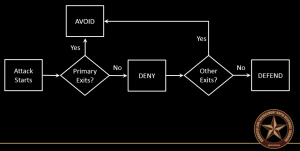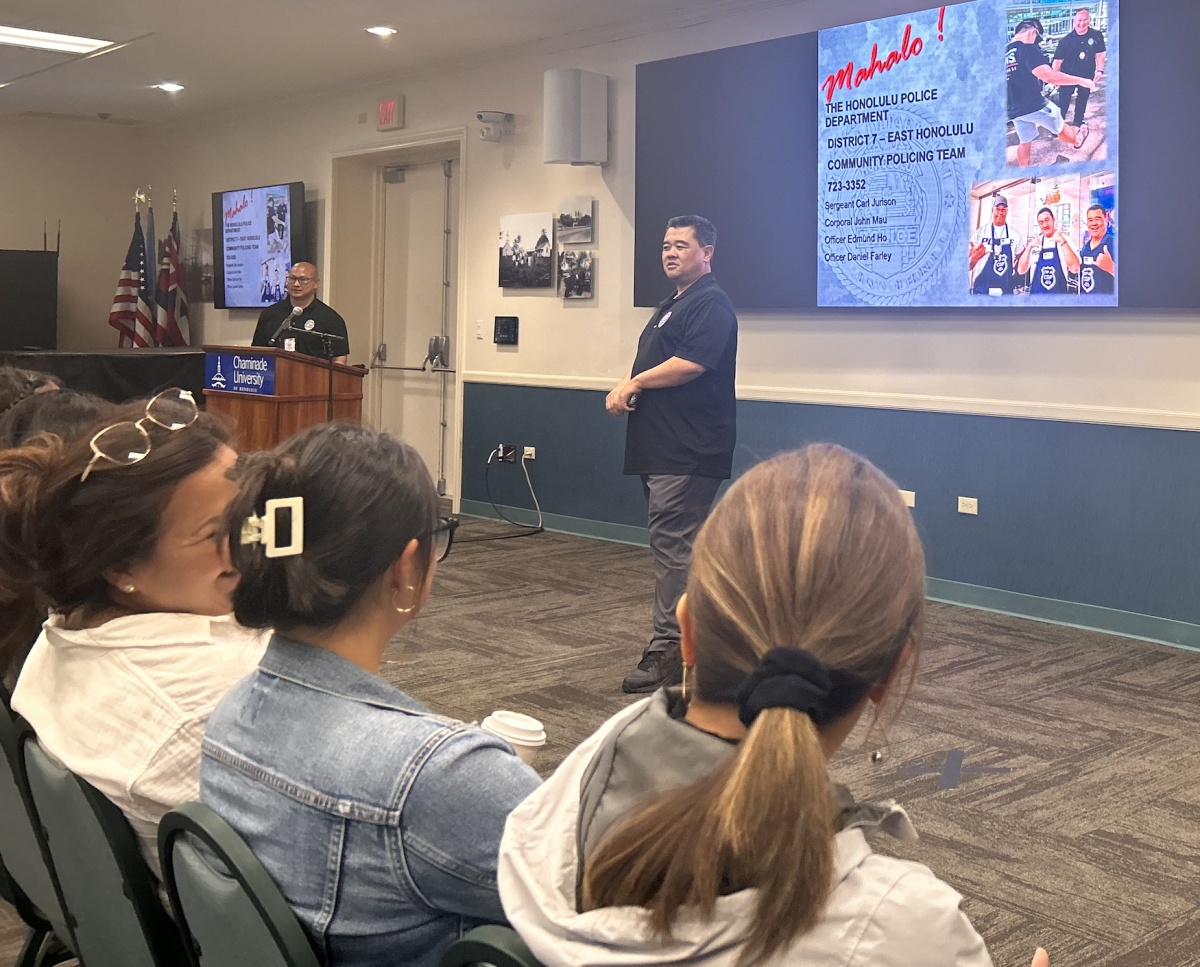On Thursday, the Honolulu Police Department presented training on how to deal with an active shooter at Chaminade.
Texas State University trains HPD in its Advanced Law Enforcement Rapid Response Training (Alerrt) Program. With this program, HPD is trained on how to properly deal with an active shooter and educate others on this matter. The presentation at Chaminade, to a packed Ching Conference Center, was given by Sgt. Carl Jurison, Cpl. John Mau, Officer Edmund Ho, and Officer Daniel Farley.
“The presentation has definitely created awareness, and the officers communicated the topics very well,” said Wendy Lam, a Business professor at Chaminade. “The video clips were powerful in getting the message across. I think everyone at Chaminade should be equipped with the information as it can save lives.”
HPD first educated the audience about what an active shooter is. The shooter can be unexpected. According to HPD, 45% of shooters have no connection to who or where they are shooting. Being aware is key because a shooter may show little to no signs of intention.
The real attention grabber was when they started to bring up real shooting events that happened, such as the Sandy Hook Elementary shooting on Dec. 14, 2012. During just five minutes, there were 26 fatalities, 20 of whom were children aged from six to seven years old. In response, the Sandy Hook Promise was created to prevent gun violence and other forms of violence and victimization before they can happen.
During the presentation at Chaminade, the HPD representatives showed a video called “Evan” to help identify the signs of a possible active shooter and how obvious signs could be missed.

The main lesson from the presentation is what to do when in a situation involving an active shooter. They taught the Avoid, Deny, and Defend Method. Learning from previous shootings, this method has been developed to help individuals remember what steps to follow when in this situation. The ADD method allows individuals to think before acting out rationally, which could endanger them. They showed a video on how to survive an active shooter while applying the ADD method.
Avoid starts with the state of mind. Stop and analyze the environment and where the threat is. Look for exits, create a plan, and safely move away from the threat. This step in the ADD method keeps people from possibly running towards danger instead of away.
Deny happens when it’s difficult or impossible to get away from the threat. People should keep a distance between themselves and the threat during this step. If in a room, barricade the door to prevent or slow down the threat from entering. Turn lights and phones off and stay quiet to avoid getting the threat’s attention.
Defend is the last resource in this method. Defend should only be used if avoid and deny are no longer options. Be aggressive and never fight fairly. People have every legal right to defend themselves if this situation ever occurs.
“Our main audiences that we come to are schools and churches,” Jurison said. “We hope that by spreading this information, people will be more educated on the matter. … If someone is in this situation, they will know what to do and get away from the threat safely.”
